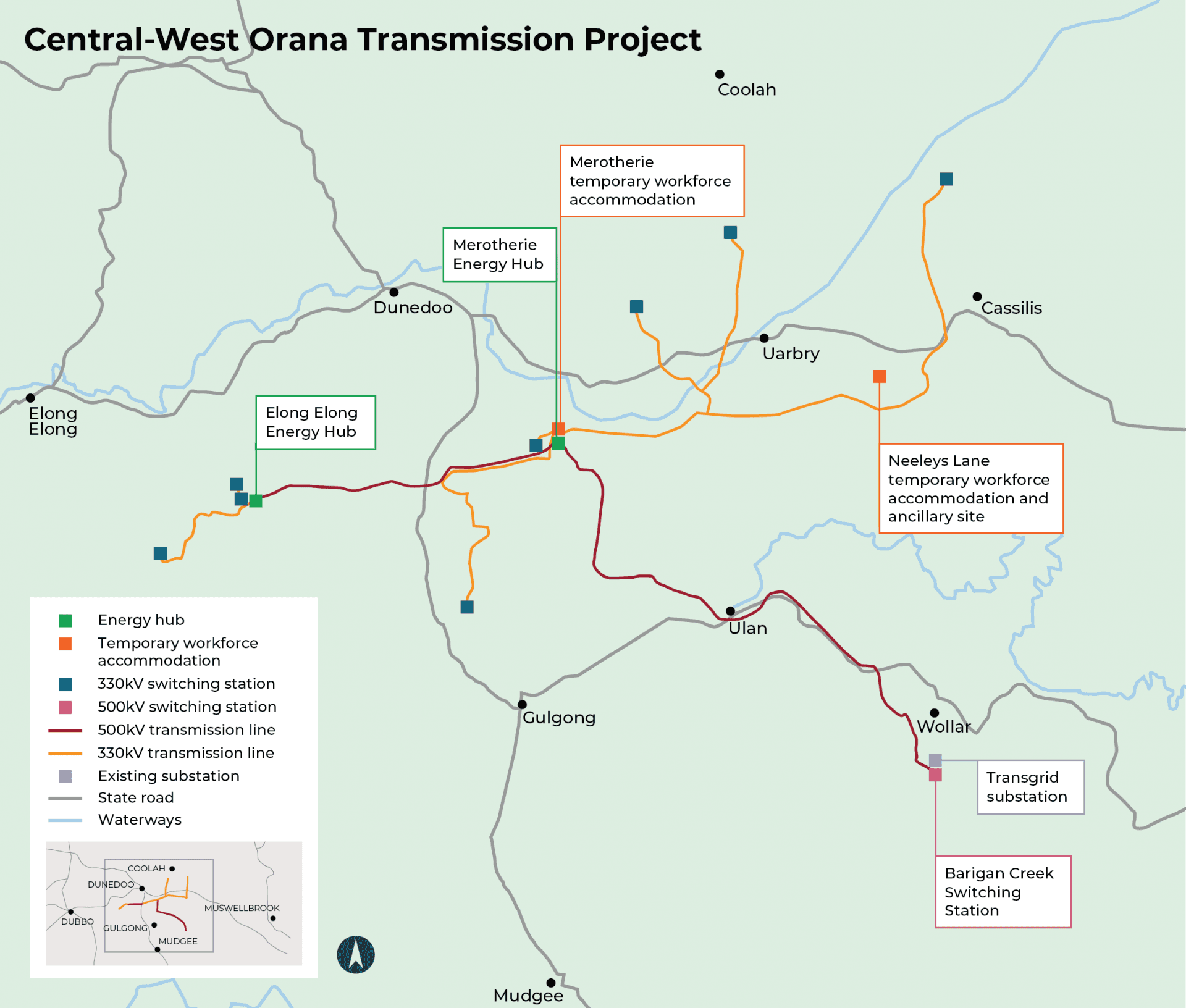About the project
Overview
The Central-West Orana REZ transmission project will build new high-capacity transmission lines, energy hubs and supporting infrastructure to transfer power generated by solar and wind farms to electricity consumers. The new infrastructure is expected to be operational by 2028 and will initially unlock up to 4.5 gigawatts (GW) of new network capacity.
The project consists of 90km of 500kV overhead transmission lines and 150 km of 330kV transmission lines for generator connections, stretching from Elong Elong in the west through to Barigan Creek in the east, via an energy hub at Merotherie. ACEREZ also has approval to construct two temporary workforce accommodation facilities in Merotherie and Neeleys Lane, Cassilis for workers who will construct the project.
The 500kV transmission lines carry electricity at a higher voltage than the 330kV transmission lines. Electricity transmitted at a higher voltage has lower energy losses and is more efficient but requires taller towers and higher clearances between the conductor and the ground.
Project features:
Energy hubs at Merotherie and Elong Elong to connect energy from nearby generation projects
A new switching station at Barigan Creek to connect the project to Transgrid’s existing Wollar Substation and into the National Electricity Market (NEM)
New twin double-circuit 500kV transmission lines and associated infrastructure to connect to the NEM
Single and double-circuit 330kV lines to connect energy generation and storage projects within the Central-West Orana REZ to the energy hubs
Two temporary workforce accommodation sites, a 1200-bed site in Merotherie and a 600-bed site in Neeleys Lane, Cassilis, which will include recreational facilities for the workers and onsite medical staff

The role of transmission infrastructure
Transmission towers support the wires (called conductors) along which high-voltage electrical power is efficiently moved around the state.
Most of the transmission towers proposed for the project are double-circuit steel lattice towers. They are called double-circuit towers because each tower supports two independent electrical circuits, one on each side of the tower. Other tower types, including single-circuit lattice towers and monopoles, are also being used in some sections along the route.
Transmission towers will stand between 45 metres and 70 metres high and will generally be spaced around 400 metres to 600 metres apart depending on the local topography and other factors.
